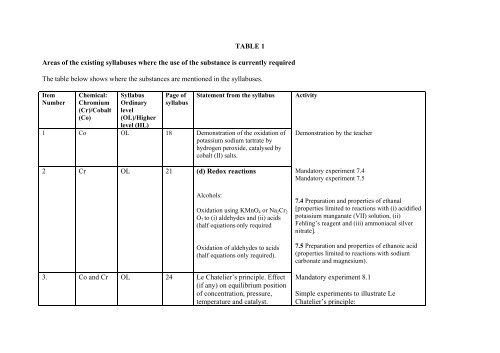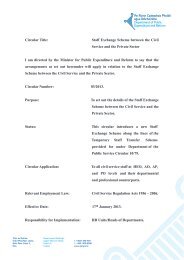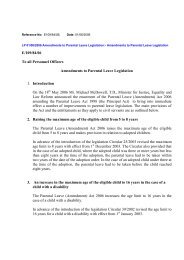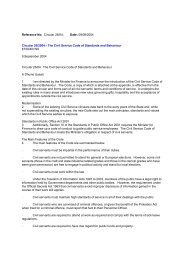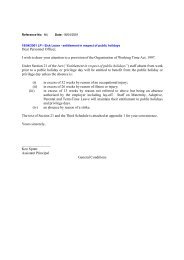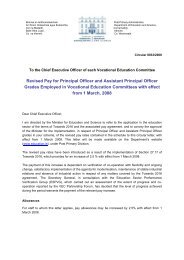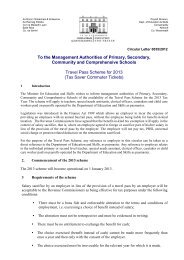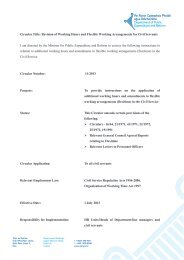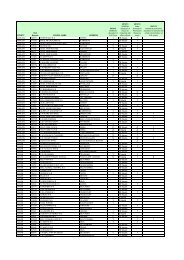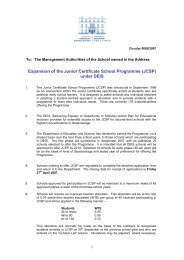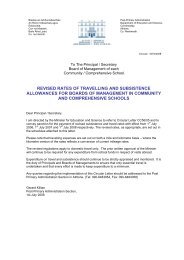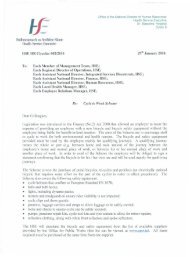Substances of Very High Concern - Table 1 - Circulars
Substances of Very High Concern - Table 1 - Circulars
Substances of Very High Concern - Table 1 - Circulars
You also want an ePaper? Increase the reach of your titles
YUMPU automatically turns print PDFs into web optimized ePapers that Google loves.
TABLE 1<br />
Areas <strong>of</strong> the existing syllabuses where the use <strong>of</strong> the substance is currently required<br />
The table below shows where the substances are mentioned in the syllabuses.<br />
Item<br />
Number<br />
Chemical:<br />
Chromium<br />
(Cr)/Cobalt<br />
(Co)<br />
Syllabus<br />
Ordinary<br />
level<br />
(OL)/<strong>High</strong>er<br />
level (HL)<br />
Page <strong>of</strong><br />
syllabus<br />
Statement from the syllabus<br />
1 Co OL 18 Demonstration <strong>of</strong> the oxidation <strong>of</strong><br />
potassium sodium tartrate by<br />
hydrogen peroxide, catalysed by<br />
cobalt (II) salts.<br />
2 Cr OL 21 (d) Redox reactions<br />
Alcohols:<br />
Oxidation using KMnO 4 or Na 2 Cr 2<br />
O 7 to (i) aldehydes and (ii) acids<br />
(half equations only required<br />
Oxidation <strong>of</strong> aldehydes to acids<br />
(half equations only required).<br />
3. Co and Cr OL 24 Le Chatelier’s principle. Effect<br />
(if any) on equilibrium position<br />
<strong>of</strong> concentration, pressure,<br />
temperature and catalyst.<br />
Activity<br />
Demonstration by the teacher<br />
Mandatory experiment 7.4<br />
Mandatory experiment 7.5<br />
7.4 Preparation and properties <strong>of</strong> ethanal<br />
[properties limited to reactions with (i) acidified<br />
potassium manganate (VII) solution, (ii)<br />
Fehling’s reagent and (iii) ammoniacal silver<br />
nitrate].<br />
7.5 Preparation and properties <strong>of</strong> ethanoic acid<br />
(properties limited to reactions with sodium<br />
carbonate and magnesium).<br />
Mandatory experiment 8.1<br />
Simple experiments to illustrate Le<br />
Chatelier’s principle:
Item<br />
Number<br />
Chemical:<br />
Chromium<br />
(Cr)/Cobalt<br />
(Co)<br />
Syllabus<br />
Ordinary<br />
level<br />
(OL)/<strong>High</strong>er<br />
level (HL)<br />
Page <strong>of</strong><br />
syllabus<br />
Statement from the syllabus<br />
Activity<br />
(i) CoCl 4 2– + 6H 2 O Co(H 2 O ) 6 2+ + 4Cl –<br />
(to demonstrate the effects <strong>of</strong> both<br />
temperature changes and concentration<br />
changes on an equilibrium mixture).<br />
(ii) Cr 2 O 7 2– + H 2 O 2CrO 4 2– + 2H +<br />
(iii) Fe 3+ + CNS – Fe(CNS) 2+<br />
(to demonstrate the effects <strong>of</strong> concentration<br />
changes on an equilibrium mixture).<br />
4 Co HL 53 Demonstration <strong>of</strong> the oxidation <strong>of</strong><br />
potassium sodium tartrate by<br />
hydrogen peroxide, catalysed by<br />
cobalt (II) salts.<br />
5 Cr HL 58 Alcohols:<br />
Oxidation using KMnO 4 or<br />
Na 2 Cr 2 O 7 to<br />
(i) aldehydes and (ii) acids (half<br />
equations only required).<br />
Oxidation <strong>of</strong> aldehydes to acids<br />
(half equations only required<br />
Demonstration experiment by the teacher<br />
Mandatory experiment 7.4<br />
Mandatory experiment 7.5<br />
7.4 Preparation and properties <strong>of</strong> ethanol<br />
[properties limited to reactions with (i) acidified<br />
potassium manganate (VII) solution, (ii)<br />
Fehling’s reagent and (iii) ammoniacal silver<br />
nitrate].<br />
7.5 Preparation and properties <strong>of</strong> ethanoic acid<br />
(properties limited to reactions with sodium<br />
carbonate, magnesium and ethanol.
Item<br />
Number<br />
Chemical:<br />
Chromium<br />
(Cr)/Cobalt<br />
(Co)<br />
Syllabus<br />
Ordinary<br />
level<br />
(OL)/<strong>High</strong>er<br />
level (HL)<br />
Page <strong>of</strong><br />
syllabus<br />
Statement from the syllabus<br />
6 Co and Cr HL 61 Le Chatelier’s principle. Effect (if<br />
any) on equilibrium position <strong>of</strong><br />
concentration, pressure,<br />
temperature and catalyst.<br />
Activity<br />
Mandatory experiment 8.1<br />
Mandatory Experiments<br />
8.1 Simple experiments to illustrate Le<br />
Chatelier’s principle:<br />
CoCl 4 2– + 6H 2 O Co(H 2 O) 6 2+ + 4Cl –<br />
(to demonstrate the effects <strong>of</strong> both temperature<br />
changes and concentration changes on an<br />
equilibrium mixture).<br />
(ii) Cr 2 O 7 2– + H 2 O 2CrO 4 2– + 2H +<br />
(iii) Fe 3+ + CNS – Fe(CNS) 2+<br />
(to demonstrate the effects <strong>of</strong> concentration<br />
changes on an equilibrium mixture).<br />
Areas <strong>of</strong> the existing JC Syllabus where the use <strong>of</strong> the substances is required<br />
Item<br />
Number<br />
Chemical:<br />
Chromium<br />
(Cr)/Cobalt<br />
(Co)<br />
Syllabus<br />
Ordinary<br />
level<br />
(OL)/<strong>High</strong>er<br />
level (HL)<br />
Page <strong>of</strong><br />
syllabus<br />
Statement from the syllabus<br />
Co OL and HL 19 OC14 use cobalt chloride paper or<br />
anhydrous copper sulfate to test<br />
for water<br />
Activity<br />
Student practical activity


